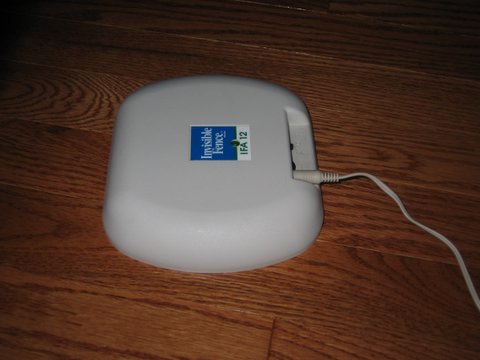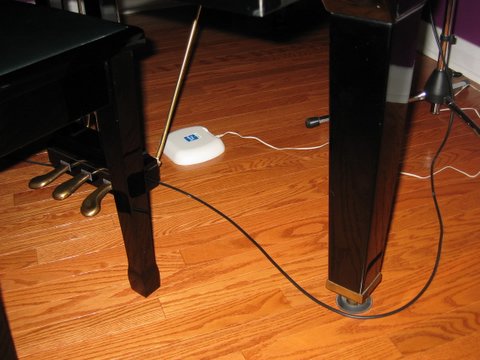Using Hidden Fencing Inside
In-house pet containment
The Invisible Fence system also solved another problem for us. As it happens, Dino is a jumper. Although we'd blocked off our living room with a baby gate (I'm sure many of those are actually used as pet gates — you often see dogs pictured on the packaging, so I'm sure that baby gate manufacturers have clued into this fact), we often found evidence that he'd been in there. We needed a better way to keep him out.

A standalone, indoor-only control module
The solution was to get an internal floor unit. It's basically the same as the control unit in our garage, except that it's completely self-contained. It emits an electrical field in a circular pattern with the unit at the center of the circle. There are no wires involved other than the electrical cord that supplies the unit with its power. You can control the radius of the circle to make it cover the right area.

Placing the standalone module under the piano to keep the dogs away from the living room
Placing this unit in our living room, underneath our piano, was the solution for our problem. Just like the electronic fence outside, as soon as any dog approached the unit, their collar starts beeping. They then hightail it out of there.
The only problem we encountered with this solution is that you have to place the unit very carefully in the room, because the electrical field easily passes through walls. After you've positioned the unit, take one of the dog collars (without the dog!) and test field's extent, paying close attention to adjoining hallways and rooms. You're trying to keep the dogs out of a certain area, not the whole house!
Next: Conclusion
